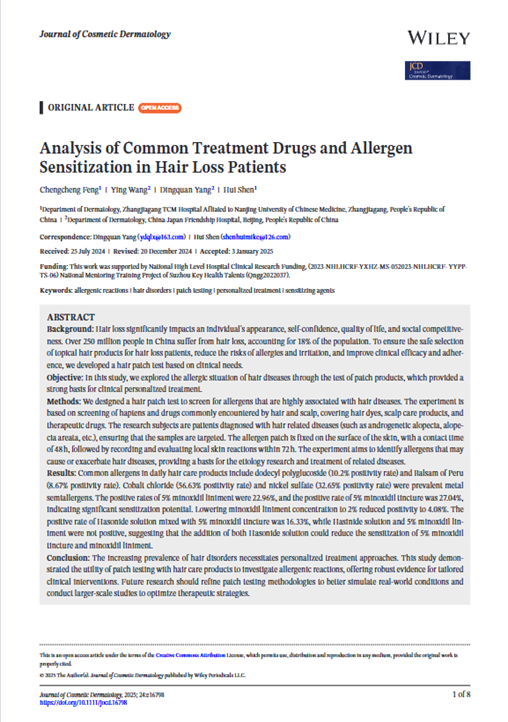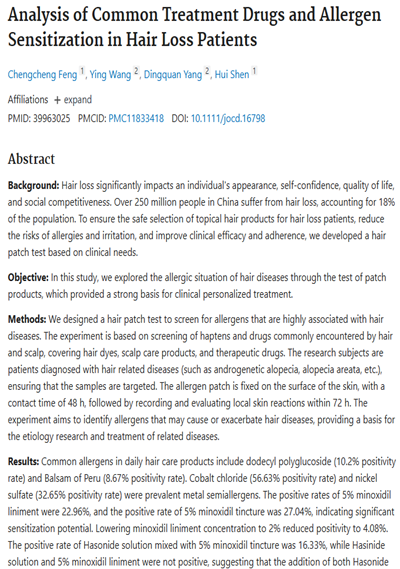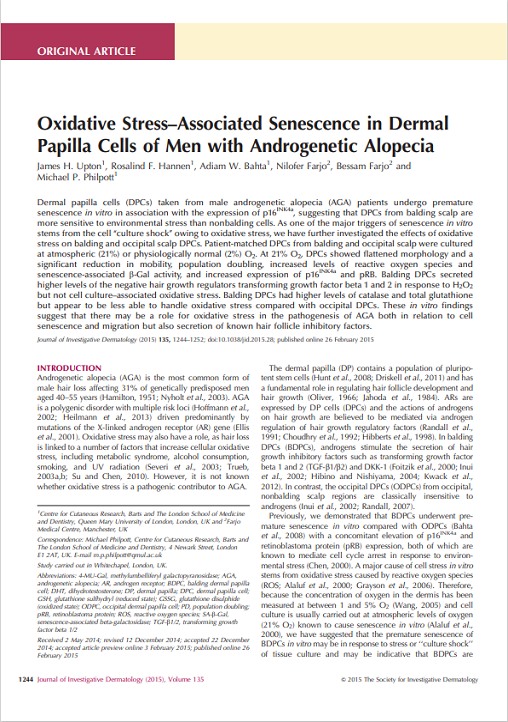
#22 Analysis of Common Treatment Drugs and Allergen Sensitization in Hair Loss Patients
This study investigated the sensitization rates to scalp care products, metals contacting the scalp, and commercially available or hospital-compounded medications used by hair loss patients. It also evaluated the effectiveness of specific drug combinations in alleviating allergic reactions.
The overall positive rate for allergens contained in hair care products was 36.22%. The most common allergens were Dodecyl polyglucoside (10.2%) and Balsam of Peru (8.67%), suggesting that patients sensitive to these substances should avoid products containing them.
Regarding metal allergens, cobalt chloride and nickel sulfate showed notably high sensitization rates of 56.63% and 32.65%, respectively. This indicates that metal allergies are very common in hair loss patients, and all products containing these metals—including hair accessories and tools—should be avoided.
The sensitization rate to topical hair loss treatments was particularly high, at 74.49%. The most frequent allergens were ketoconazole lotion (50.00%) and selenium sulfide lotion (29.08%), suggesting that the possibility of allergic reactions should be considered when using these medications.
An examination of the sensitization rates to combined topical drug therapies revealed that 5% Minoxidil tincture had a positivity rate of 27.04%, and 5% Minoxidil liniment had a positivity rate of 22.96%, demonstrating a high potential for sensitization to minoxidil formulations. In contrast, 2% Minoxidil liniment showed a significantly lower sensitization rate of 4.08%.
When combined with Hydrocortisone, 5% Minoxidil tincture showed a reduced sensitization rate of 16.33%, and no positive reactions were observed with 5% Minoxidil liniment, suggesting that Hydrocortisone may help mitigate allergic responses to Minoxidil.
In conclusion, this study emphasizes the importance of personalized approaches and allergy management in the treatment of hair loss. Specifically, adjusting the concentration of topical agents like Minoxidil and incorporating adjunctive ingredients such as Hydrocortisone may be effective in reducing sensitization reactions.
The overall positive rate for allergens contained in hair care products was 36.22%. The most common allergens were Dodecyl polyglucoside (10.2%) and Balsam of Peru (8.67%), suggesting that patients sensitive to these substances should avoid products containing them.
Regarding metal allergens, cobalt chloride and nickel sulfate showed notably high sensitization rates of 56.63% and 32.65%, respectively. This indicates that metal allergies are very common in hair loss patients, and all products containing these metals—including hair accessories and tools—should be avoided.
The sensitization rate to topical hair loss treatments was particularly high, at 74.49%. The most frequent allergens were ketoconazole lotion (50.00%) and selenium sulfide lotion (29.08%), suggesting that the possibility of allergic reactions should be considered when using these medications.
An examination of the sensitization rates to combined topical drug therapies revealed that 5% Minoxidil tincture had a positivity rate of 27.04%, and 5% Minoxidil liniment had a positivity rate of 22.96%, demonstrating a high potential for sensitization to minoxidil formulations. In contrast, 2% Minoxidil liniment showed a significantly lower sensitization rate of 4.08%.
When combined with Hydrocortisone, 5% Minoxidil tincture showed a reduced sensitization rate of 16.33%, and no positive reactions were observed with 5% Minoxidil liniment, suggesting that Hydrocortisone may help mitigate allergic responses to Minoxidil.
In conclusion, this study emphasizes the importance of personalized approaches and allergy management in the treatment of hair loss. Specifically, adjusting the concentration of topical agents like Minoxidil and incorporating adjunctive ingredients such as Hydrocortisone may be effective in reducing sensitization reactions.
Previous post






